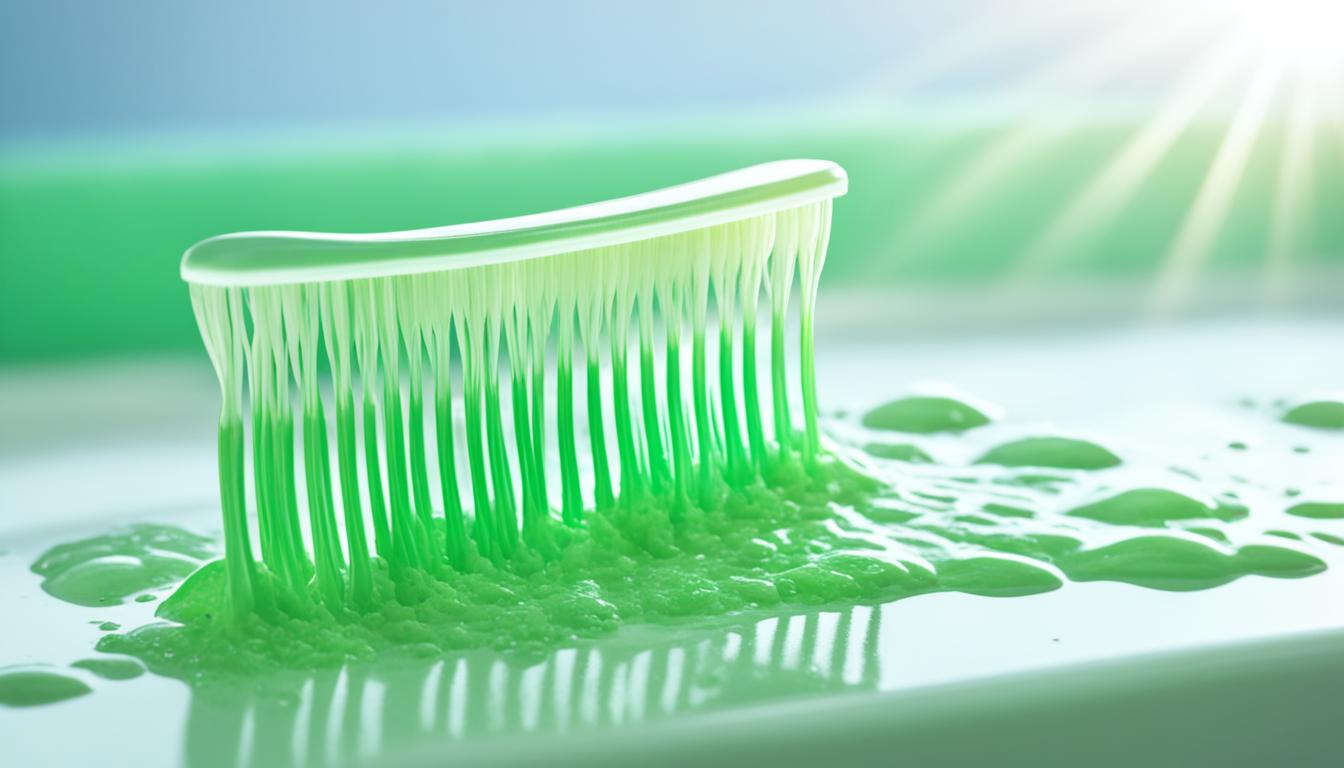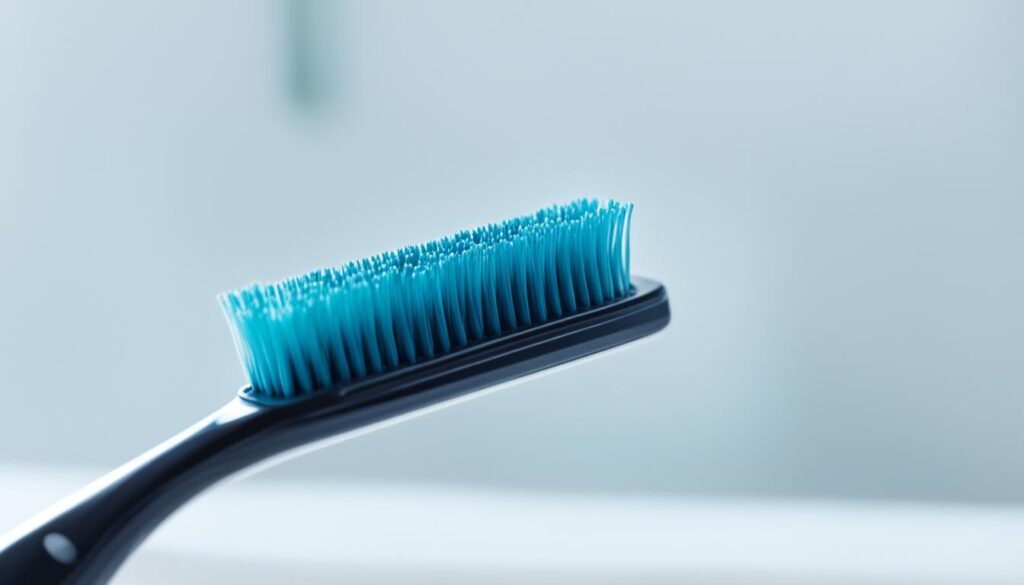
Eliminate Mold on Toothbrush: Effective Tips
Having mold on your toothbrush can be an alarming and unhygienic issue. Not only does it compromise your oral health, but it can also lead to unwanted bacteria growth. In this section, we will provide you with effective tips on how to clean mold from your toothbrush, ensuring proper oral hygiene.
When it comes to cleaning mold from your toothbrush, it’s important to take the necessary steps to eliminate any traces of mold or bacteria. By following these tips, you can maintain a clean and healthy toothbrush for optimal oral care.
Key Takeaways
- Regularly clean your toothbrush to remove mold and bacteria.
- Improve toothbrush hygiene by storing it in a clean and dry place.
- Consider using a toothbrush sanitizer or disinfectant to ensure thorough cleaning.
- Replace your toothbrush every three to four months to avoid mold growth.
- Seek professional assistance when dealing with persistent mold issues.
By implementing these tips and practicing proper toothbrush hygiene, you can eliminate mold on your toothbrush and maintain a healthy smile.
Prevent Mold on Toothbrush: Maintain Impeccable Toothbrush Hygiene
Preventing mold on your toothbrush is essential for maintaining impeccable toothbrush hygiene. By employing simple yet effective practices, you can ensure that your toothbrush remains clean and free from mold.
Clean Your Toothbrush Holder
A clean toothbrush holder is crucial for preventing mold growth on your toothbrush. Over time, residue and moisture can accumulate in the holder, providing an ideal breeding ground for mold and bacteria. Regularly clean your toothbrush holder by immersing it in warm soapy water and scrubbing it thoroughly. Rinse and air dry before placing your toothbrush back in.
Properly Store Your Toothbrush
How you store your toothbrush plays a significant role in preventing mold growth. After brushing, thoroughly rinse your toothbrush under running water to remove any remaining toothpaste or debris. Shake off excess water and store your toothbrush in an upright position to allow it to air dry. Avoid storing multiple toothbrushes in close proximity, as this can promote the transfer of bacteria and mold.

Maintain a Hygienic Environment
In addition to cleaning your toothbrush holder and storing your toothbrush properly, it’s important to maintain a hygienic environment for your dental tools. Keep your bathroom clean, dry, and well-ventilated to discourage mold growth. Regularly disinfect surfaces, such as countertops and sinks, to minimize the spread of bacteria and mold. Also, avoid using your toothbrush in the shower, as the damp environment can promote mold growth.
Disinfect and Sanitize Your Toothbrush
Regularly disinfecting and sanitizing your toothbrush can further prevent mold growth. You can do this by soaking your toothbrush in an antibacterial mouthwash for a few minutes, or by using a toothbrush sanitizer specifically designed for this purpose. Additionally, consider replacing your toothbrush every three to four months, or sooner if the bristles become frayed or worn.
Pro Tip
“Toothbrushes exposed to mold can lead to health issues, so it’s important to take preventive measures to maintain optimal toothbrush hygiene. By implementing these simple tips, you can keep your toothbrush clean and free from mold, ensuring a healthier smile.”
In summary, preventing mold on your toothbrush requires maintaining impeccable toothbrush hygiene. Clean your toothbrush holder, properly store your toothbrush, and maintain a hygienic environment for your dental tools. Regularly disinfect and sanitize your toothbrush to further prevent mold growth. By following these practices, you can ensure that your toothbrush remains free from mold and bacteria, promoting optimal dental hygiene.
Conclusion
In conclusion, maintaining proper toothbrush hygiene and eliminating mold from your toothbrush are essential steps in protecting your oral health. By following the tips outlined in this article, you can ensure that your toothbrush remains free from harmful bacteria and mold, promoting optimal dental hygiene.
Remember to clean your toothbrush regularly by rinsing it thoroughly with clean water after each use. Store your toothbrush in a clean and dry place, away from the moisture that can promote mold growth. Additionally, it is important to replace your toothbrush every three to four months or as soon as the bristles start to fray.
If you find mold on your toothbrush or suspect an issue with mold in your home, consider seeking professional assistance. Fix Mold Miami, with their expertise in mold assessment and remediation, can help address any mold-related concerns you may have. Contact them at 305-465-6653 to ensure a healthy and mold-free living environment.
Together, let’s take the necessary steps to fight mold, maintain proper toothbrush hygiene, and safeguard our oral health. By implementing these practices, you can enjoy a healthy smile and overall well-being.




